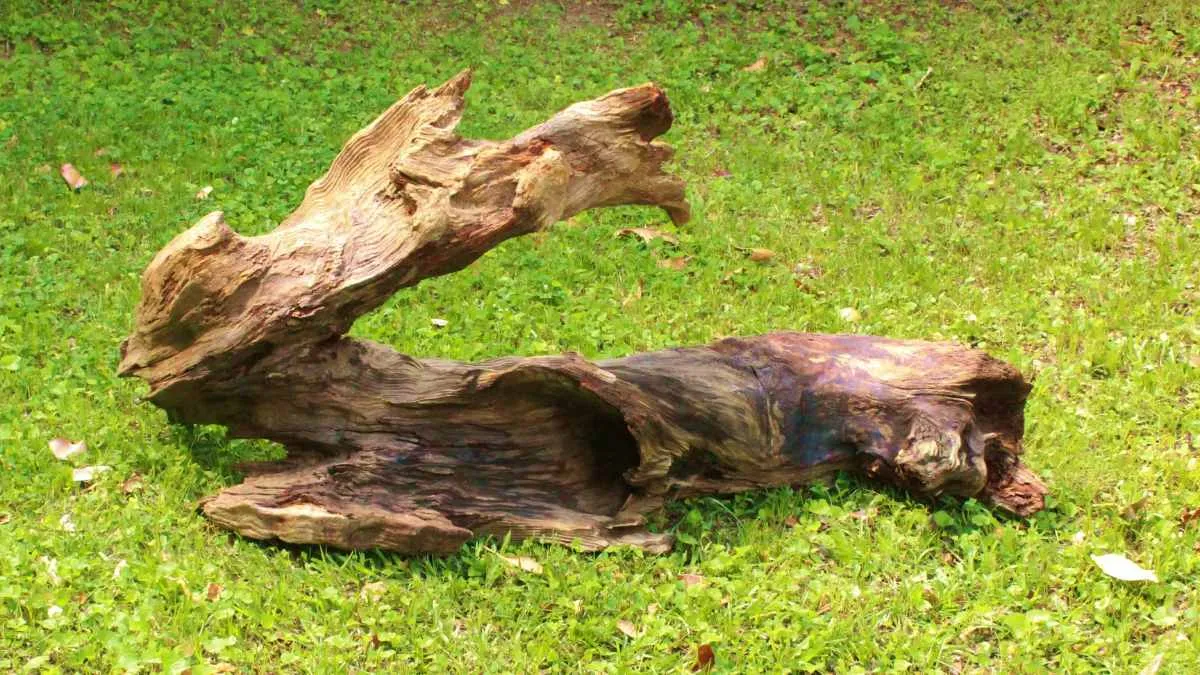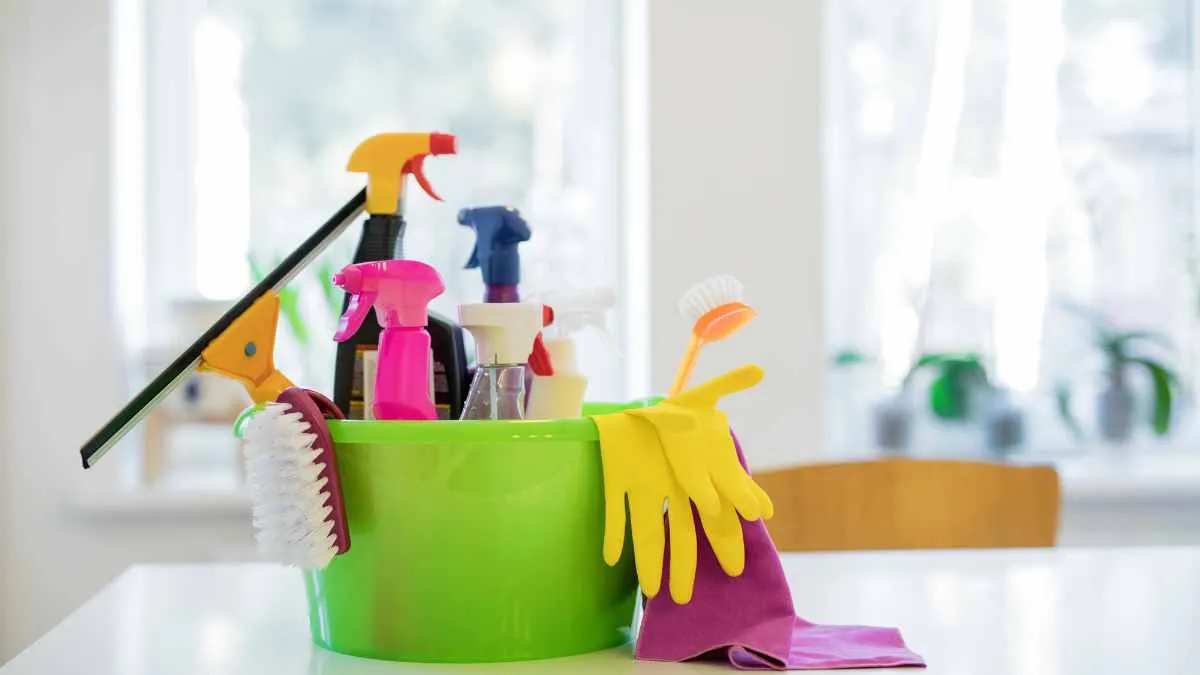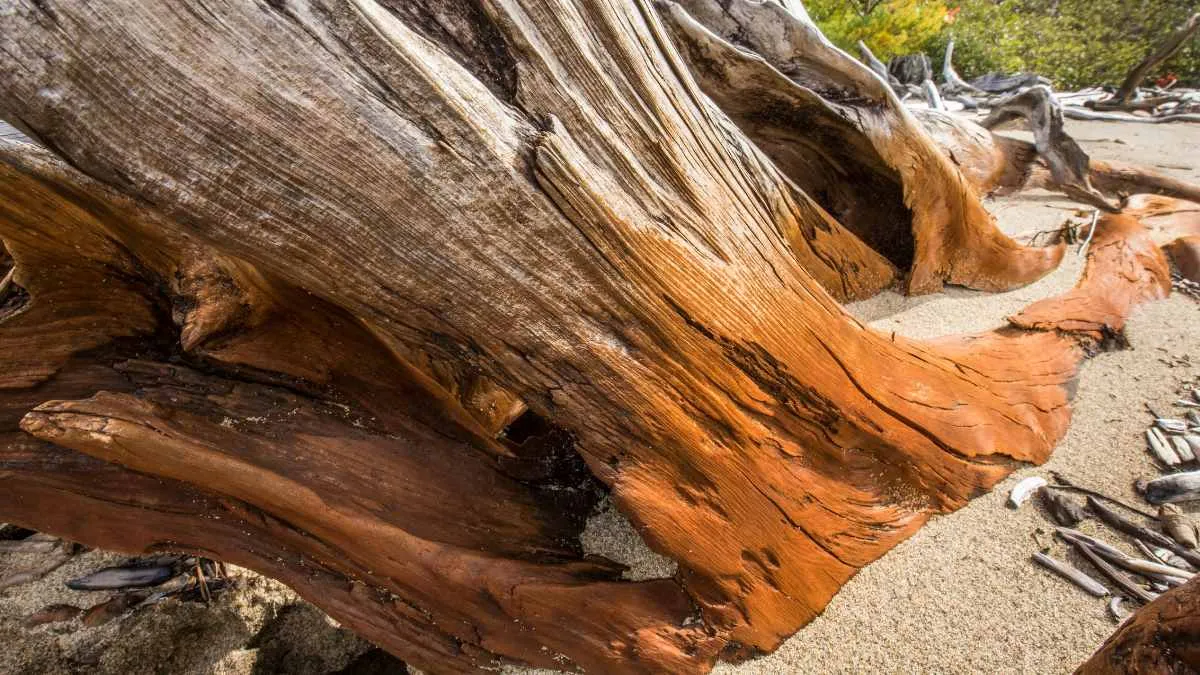Large Driftwood Cleaning Guide – Easy Steps & Tips
POSTED ON April 17, 2024

Didn't know how to start cleaning those large driftwood? Whether you're using it for home decor or DIY projects, we've provided easy steps and valuable tips to help you effectively clean your driftwood and restore its natural beauty.
We will walk you through cleaning driftwood at home using DIY techniques and natural methods. There is no need for expensive cleaning products or complicated procedures. We'll show you the best ways to clean your driftwood with items you already have.
So, if you have a gorgeous piece of driftwood that needs some love and attention, read on to discover how you can give it a new lease on life. Let's dive into the world of driftwood cleaning with confidence and creativity!
Why Clean Your Large Driftwood Piece?
Cleaning your big piece of driftwood is important for a few reasons. It helps make it look better and keeps it in good shape for your decor or projects.
1. Enhanced Aesthetic Appeal: Cleaning driftwood removes the dirt and dust that build up over time, showing off its natural beauty. A clean piece of driftwood can give a rustic feel to any room.
2. Improved Durability: By cleaning driftwood, you can prevent rot, decay, and further damage caused by moisture, insects, or mold. Regular cleaning extends the lifespan of your driftwood piece, allowing you to enjoy it for years to come.
3. Health and Safety: Driftwood often carries bacteria, fungi, or unwanted organisms that can be harmful if not properly cleaned. By sanitizing and disinfecting your driftwood, you can create a healthier and safer environment, particularly when using it for aquariums or other sensitive applications.
4. Customization Options: Cleaning your driftwood piece provides a blank canvas for your creativity. Once free from debris and stains, you can easily paint, stain, or modify the driftwood to suit your specific design preferences or project requirements.
5. Sustainable Practice: As driftwood is a natural resource, cleaning it ensures that you are respectful of the environment. By properly maintaining and preserving your driftwood, you contribute to sustainable practices by repurposing a material found in nature.
Having a large piece of driftwood is also great for air plants in driftwood designs. Now, let's move on to the practical steps and techniques required to effectively clean and restore its natural beauty.
Preparing Your Workspace

A well-organized and properly equipped workspace will make cleaning easier and more efficient. This meticulous preparation is one of the reasons why driftwood is expensive. So follow these steps to set up your workspace and gather the necessary tools.
Gather the Tools for Cleaning Driftwood
• A soft-bristle brush
• Old toothbrushes
• Clean cloth or spongeBucket or basin
• Water source
• Mild soap or detergent
• Protective gloves
• Eye protection
• Drying rack or towels
Clear and Clean Your Workspace
Ensure you have enough space to work comfortably on your driftwood piece. Clear any clutter or objects that may obstruct your cleaning process. Wipe down the surface of your workspace to remove any dust or debris that could accidentally transfer onto the driftwood.
Set Up a Well-Ventilated Area
Choose a well-ventilated area, such as an outdoor patio or a well-ventilated room, to clean your driftwood. Cleaning driftwood can release dust particles and odors into the air, so proper ventilation is essential for your comfort and safety.
Choose a well-ventilated area, such as an outdoor patio or a well-ventilated room, to clean your driftwood. Cleaning driftwood can release dust particles and odors into the air, so proper ventilation is essential for your comfort and safety.
Protective Measures
Before you begin the cleaning process, make sure to protect yourself by wearing gloves and eye protection. This will ensure your safety and minimize any potential hazards or irritations.
Arrange the Necessary Cleaning Tools
Organize your tools so that you can easily access them whenever needed. This will save you time and effort during the cleaning process.
By preparing your workspace and gathering the necessary tools, you'll be ready to clean your driftwood effectively. In the next section, we will discuss the steps involved in removing any loose debris from your driftwood piece.
Removing Loose Debris
To ensure thorough cleaning, follow these techniques and utilize the right tools:
1. Gentle Brushing
Start by gently brushing off the driftwood using a soft bristle or old toothbrush. This will help dislodge loose dirt and dust without damaging the wood.
2. Compressed Air
If your driftwood has hard-to-reach crevices or intricately detailed areas, a can of compressed air can be highly effective. Aim the nozzle at the debris, and use short bursts of air to blow away the dirt and dust.
3. Vacuuming
A handheld vacuum cleaner with a soft brush attachment can be useful if you're dealing with larger pieces of loose debris, such as leaves or small twigs. Gently run the brush over the driftwood's surface to pick up the debris.
4. Water Rinse
In some cases, gentle rinsing with water may be necessary. Fill a basin or tub with lukewarm water and submerge the driftwood, allowing it to soak for a few minutes. Then, use a soft cloth or sponge to wipe away any remaining dirt or dust. Others boil driftwood to remove tannins and clean it fast.
By taking the time to remove the loose debris from your driftwood, you'll be able to reveal its natural beauty and prepare it for the next steps of the cleaning process.
Treating Stains and Blemishes

Over time, saltwater driftwood may develop stains or blemishes that can detract from its natural beauty. Fortunately, various methods exist to treat and remove these imperfections, ensuring that your driftwood looks clean and fresh.
1. Gentle Sanding
If the stains or blemishes on your driftwood are surface-level, sanding can be an effective solution. Use a fine-grit sandpaper to gently sand the affected areas in the direction of the wood grain. Be cautious not to sand too aggressively to avoid damaging the wood's texture.
2. Oxalic Acid Treatment
Oxalic acid is a popular choice for treating deep stains on driftwood. Dilute a small amount of oxalic acid in water as per the manufacturer's instructions. Apply the solution to the stained areas using a brush or cloth, and let it sit for a few minutes. Then, rinse the driftwood thoroughly with water.
3. Hydrogen Peroxide Bath
Hydrogen peroxide can effectively lighten and remove stains on driftwood. Fill a container with hydrogen peroxide and immerse the affected areas of the driftwood, ensuring complete coverage. Let it soak for several hours or overnight. Rinse the driftwood thoroughly with water afterward.
4. Bleaching Technique
Bleaching is another option for removing stubborn stains from driftwood. Create a bleach solution by mixing equal parts water and bleach. Apply the solution to the stains using a brush or cloth, and let it sit for a while. Rinse the driftwood thoroughly with water once the stains have lightened or disappeared.
5. Tea Tree Oil Solution
Tea tree oil is known for its natural antifungal and antibacterial properties. Mix a few drops of tea tree oil with water in a spray bottle and apply it to the stained areas. Gently scrub the stains with a soft brush or cloth, then rinse the driftwood thoroughly with water.
Remember to test any cleaning solution on a small, inconspicuous area of the driftwood before applying it to the entire piece. This will help ensure that the cleaning method does not cause any adverse reactions or damage to the wood.
Using these effective techniques, you can restore your driftwood's natural beauty by treating and removing stains and blemishes.
Sanitizing and Disinfecting
Cleaning driftwood goes beyond just surface dirt. It's essential to sanitize and disinfect the piece to eliminate bacteria, fungi, or unwanted odors. Sanitizing driftwood is particularly important if you plan to use it as part of your home decor or DIY projects. In this section, we will guide you through effectively sanitizing and disinfecting your large driftwood piece, ensuring that it is safe and healthy for use.
Tools and Materials You'll Need
• Bucket or basin
• Water
• Bleach or hydrogen peroxide
• Gloves
• Soft-bristle brush
Before you begin the sanitization process, gather all the necessary tools and materials to make the task more convenient and efficient.
Steps for Sanitizing and Disinfecting Driftwood
Step 1: Prepare a cleaning solution by mixing bleach or hydrogen peroxide. You can dilute the bleach by adding one part to nine parts water. If using hydrogen peroxide, a 50:50 solution with water will suffice.
Step 2: Wear gloves to protect your hands from the cleaning solution and any potential irritants.
Step 3: Submerge the driftwood in the cleaning solution, ensuring it is fully covered.
Step 4: Allow the driftwood to soak in the solution for at least 30 minutes to ensure thorough disinfection.
Step 5: Use a soft-bristle brush to scrub the surface of the driftwood, focusing on any areas that may have accumulated dirt, algae, or bacteria.
Step 6: Rinse the driftwood thoroughly with clean water to remove any remaining cleaning solution.
Step 7: Place the driftwood in a well-ventilated area to dry completely. Make sure it is not exposed to direct sunlight, as this can cause discoloration.
Remember always to handle driftwood with care and take the necessary precautions to protect yourself during the cleaning process.
Read more: 5 Quick and Easy Projects for Your Driftwood
Preserving and Maintaining Your Driftwood
Now that you've successfully cleaned your large driftwood piece, it's important to know how to preserve its natural beauty and keep it looking its best for years to come. Caring for your driftwood involves a few simple techniques that will help maintain its unique charm.
The first step in maintaining your driftwood is to preserve it. Applying a protective coating will help prevent drying, cracking, and decay. You can use a clear waterproof sealant or a furniture wax specifically designed for wood. Apply the coating evenly, ensuring complete coverage, and allow it to dry thoroughly before handling or displaying the driftwood.
To keep your driftwood looking its best, avoid exposing it to direct sunlight for extended periods. Sunlight can cause fading and discoloration over time. Instead, place your driftwood in a well-ventilated area away from direct sunlight to preserve its natural color.
Regular dusting is another important aspect of driftwood maintenance. Using a soft cloth or brush, gently remove any accumulated dust and debris from the surface of the driftwood. This will help prevent dirt from settling into crevices and maintain its overall appearance.
By following the outlined steps for cleaning, treating stains, sanitizing, and preserving driftwood, you can restore its natural beauty and prolong its lifespan for various decorative or DIY projects.
ARE YOU INTERESTED IN DRIFTWOOD DECOR?
If you have projects that need driftwood ideas, don't hesitate to contact us.
© 2023 DB Texas Driftwood Artists
